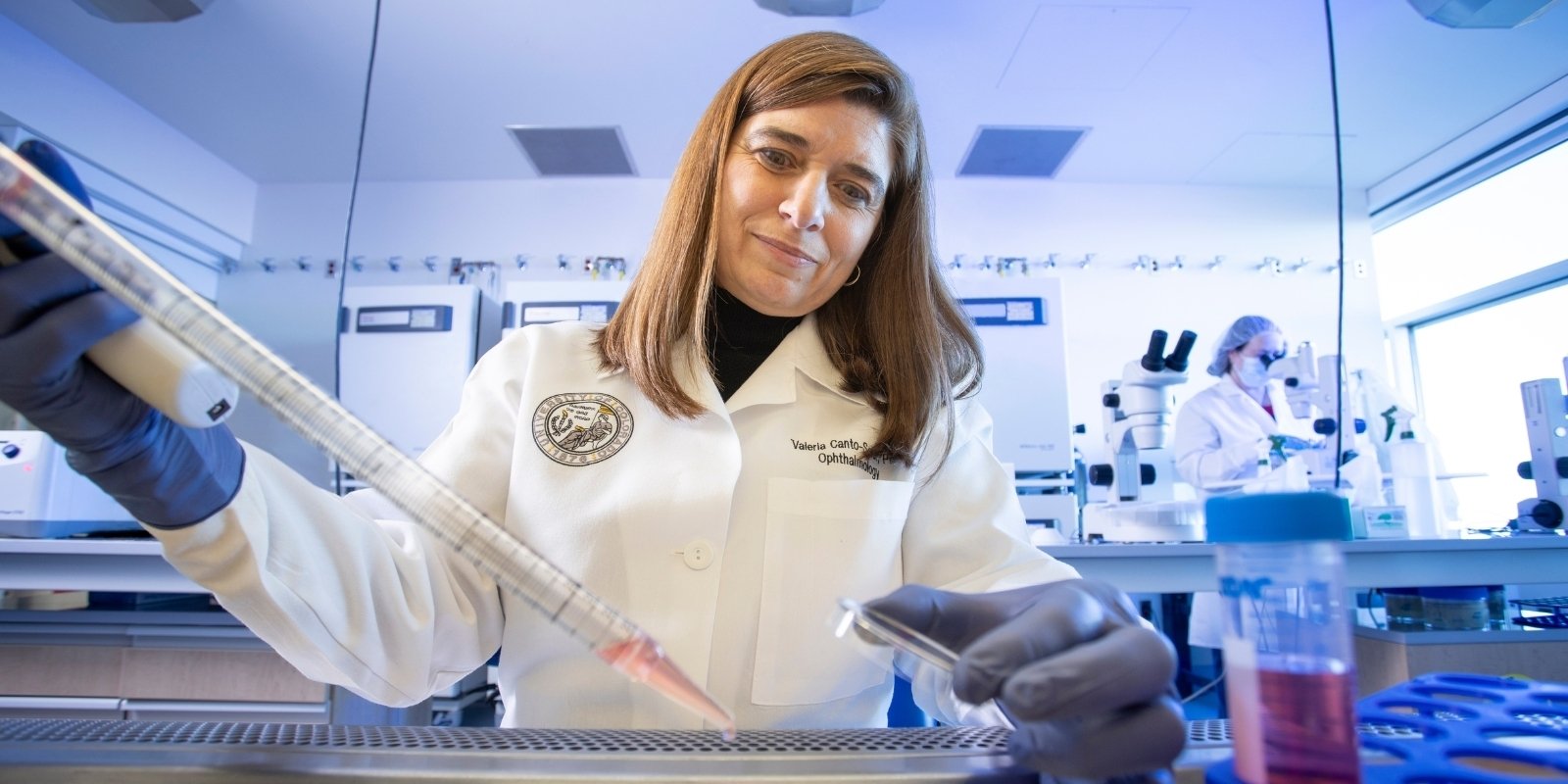You probably remember where you were when everything shut down in March last year. Maybe you were watching the NBA games, or perhaps you recall the White House press conferences. It’s been over a year since COVID-19, social distancing and quarantine became part of our daily vocabulary.
Even though we faced great challenges, the University of Colorado Anschutz Medical Campus made tremendous strides in the last year. The COVID-19 pandemic inspired us to think differently and to come up with new solutions to unique problems.
The pandemic inspired innovation. When the pandemic threatened the ability for the School of Dental Medicine faculty and students to see patients, Thomas Greany, DDS, clinical assistant professor, and Alfred Li, a third-year dental student, saw an opportunity.
With personal protective equipment (PPE) running low, Greany and Li designed a 3D-printed face shield with the help of colleagues and the team at Inworks. The face shields protected wearers while not adding to the PPE shortage. Several colleagues continue to use the face shields in different procedures today.
We built relationships. The Colorado School of Public Health worked with the Colorado Department of Public Health and Environment (CDPHE) and local public health agencies statewide on modeling projections and estimates of the spread of COVID-19. The school also collaborated with community organizations including the Denver Museum of Nature and Science and its Institute for Science and Policy to highlight science and provide a year-long forum for the public to hear from experts and ask questions on the pandemic and its consequences.
We improved patient care. Telehealth became a top priority for the CU School of Medicine and CU College of Nursing. They found an increased acceptance from patients and payers for the use of telehealth to provide clinical care when it was appropriate.
For the Skaggs School of Pharmacy and Pharmaceutical Sciences, telepharmacy played a vital role during the pandemic. Pharmacists’ ability to provide chronic medication management virtually has been a critical part of keeping patients healthy, and it will continue post-pandemic.
Doctors, nurses and pharmacists were able to reach rural communities, broadening healthcare access.

We improved education. We excelled at remote education. Faculty members learned to effectively use distance-delivery methods, such as Zoom, and to explore the use of tools, including TechSmith Relay, to facilitate student learning.
This provided benefits that will outlast the pandemic, such as the Skaggs School of Pharmacy offering a remote PharmD option this fall. The goal of the new degree option is to provide an opportunity for those students still uncomfortable with moving to be able to pursue their pharmacy education and to increase equity for individuals for whom moving to Denver is prohibitive. Also, the School of Pharmacy is hoping to see an uptick in interest from rural areas, where pharmacists are in high demand.
We saw an increased awareness of public health. If it wasn’t apparent before, now the need and importance of public health is obvious. The Colorado School of Public Health saw increased enrollment, and exposure of campus faculty reached new heights. Colorado Gov. Jared Polis noted a few times that Dean Jonathan Samet, MD, MS, is “Colorado’s own Dr. Fauci.”
As a whole, the CU Anschutz Medical Campus skyrocketed onto the national stage with our experts – in infectious disease and other disciplines – regularly tapped by major media outlets, including The New York Times, U.S. News & World Report and CNN. Our breakthroughs have been in the spotlight, and the nation and world are taking notice.
Even though the pandemic upended life as we knew it, it only enhanced the resiliency of our campus’s faculty, staff and students. An indisputable bright side emerged from this difficult year, and we will carry the innovations forward as we continue to strengthen our pillars of innovation, research, education and patient care.



